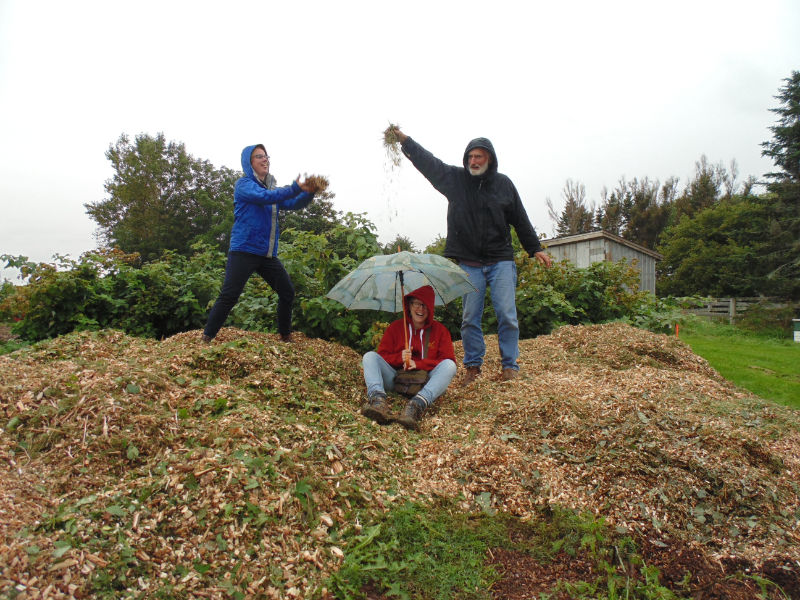1. WINTER HOURS AND OPERATION
2. SPRING 2023 WAITLIST
3. ELM INOCULATION QUEUE OPEN
4. PREPPING TREES FOR WINTER
5. OVERWINTERED MULCH
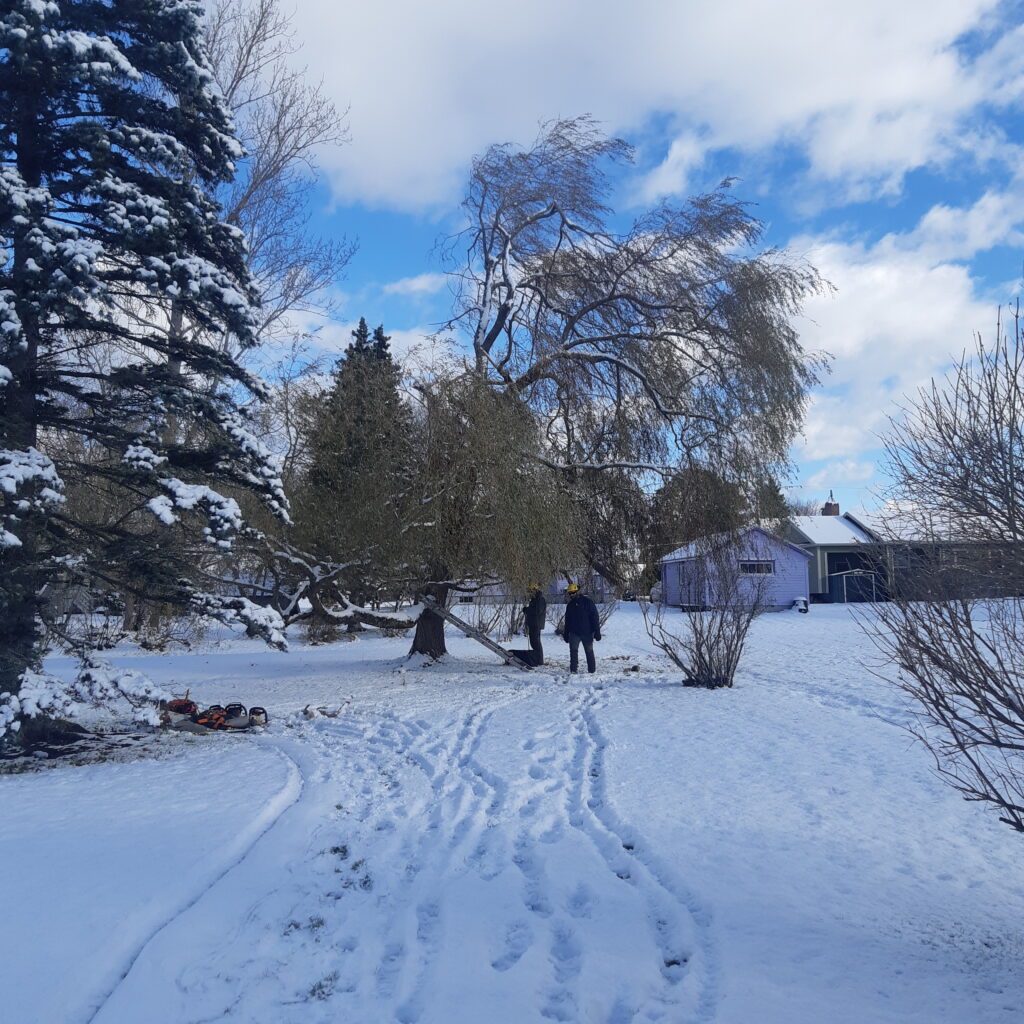
1. WINTER HOURS AND OPERATION
Our off-season is on the horizon, and we are looking forward to rest after such a productive year. This has been our busiest year of all time, between Hurricane Fiona and high demand, and we sincerely thank all of our clients for their patience, understanding, and support throughout this year. We are very fortunate to have such a lovely client base here in New Brunswick and Nova Scotia.
Our last day for the 2022 season is tentatively scheduled for mid-December, but the weather will determine how much work we are able to complete before we lock up our saws. Most new work will be on our spring waitlist (explained in more detail below) unless it is acute or in our immediate work area.
We will not have regular winter hours this year, but you are still welcome to send us an email during our off-season. Be advised that it is unlikely we will respond to work inquiries during that time.
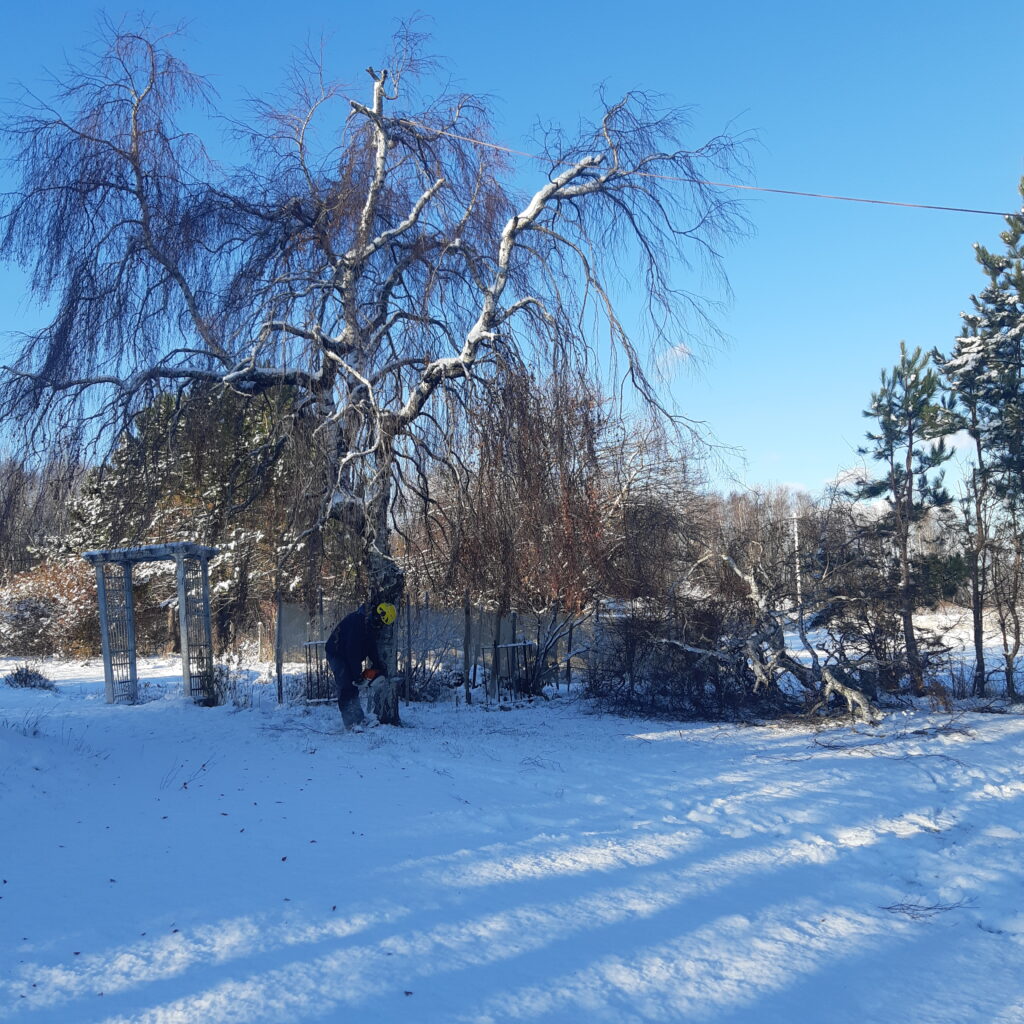
2. SPRING 2023 WAITLIST
For the first time ever, we are opening a waitlist for spring 2023. Most new work outside of our immediate work areas (Sackville and Amherst) will be placed on our waitlist, unless it is an emergency or there is a construction deadline. If you receive a quote in the winter for work to be completed in the spring, you will take advantage of 2022 prices.
Our work season begins in early March, weather permitting. If there is still snow on the ground, jobs that involve stumping will be scheduled after the snow melts. We will contact you closer to spring to schedule a time for us to visit your trees.
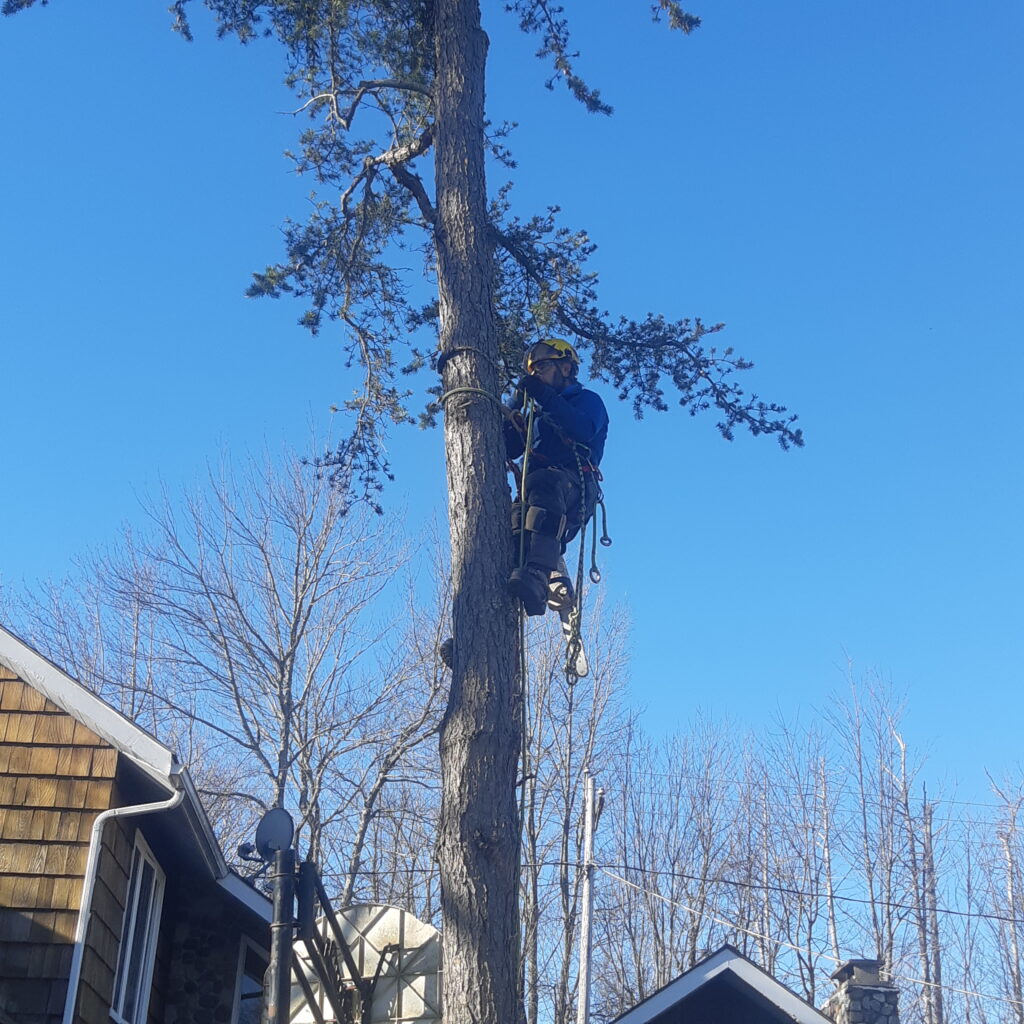
3. ELM INOCULATIONS QUEUE OPEN
Last summer we inoculated over 50 elm trees with DutchTrig, a preventative treatment that prevents the deadly Dutch Elm Disease. This campaign could not have happened without the support of elm-loving clients and sponsors. Thank you all very much for your ongoing dedication to preserving local elm trees.
We hope to double the amount of DutchTrig in 2023 in order to include more elms. If you have an elm tree you are invested in, the best time to protect it against Dutch Elm Disease is yesterday. The treatment works like a flu shot, it exposes the elm to a small amount of the deadly fungus to prepare it for its eventual exposure to the disease. This increases their chance of survival, which is otherwise grim. Once the tree is exposed to the disease, there is unfortunately not much anyone can do. This annual treatment is the only current pesticide available to combat Dutch Elm Disease, and we are the sole licenced providers of said treatment in the area.
If you are interested in learning more about this service or donating to the campaign, please contact us or visit the “Elms” page on our website. We recommend getting in our queue sooner rather than later, as we had to turn folks down last year due to high demand.
If you made a donation to the elm inoculation project in 2022, we will contact you in early 2023 to confirm if you are still interested in supporting the project for another year. Some sponsors have committed to a 5-year sponsorship plan, and those folks will receive a thorough update on their elms’ well-being.
Thank you to all who donated and supported this project in 2022!

4. PREPPING TREES FOR WINTER
Just because there’s snow on the ground doesn’t mean that tree care is over for the season. Tree care is an all-year project, and here are some ways you can improve your trees’ health during the winter.
Young trees are susceptible to the cold, and mulching is a low-cost method you can implement to increase their well-being during these long harsh months. Wood chips provide insulation to root systems. If the snow allows, creating a mulch ring around the base of your tree can protect young roots from deep frost. Be careful not to just pile on mulch, as that can cause irreversible damage to the base of your tree. Avoid what we call a “mulch volcano,” and instead keep the base of the trunk free of mulch. If you have saplings in pots that you didn’t have the time to get into the ground, don’t fret. Nestling the pots in mulch piles (again, leaving the root flare exposed) will help them stay warm. We are still producing and selling mulch, so get in touch if you would like any.
Some folks like to wrap shrubs or small-growing trees with burlap or build a protective structure to protect them from salt and other harsh winter elements. This can prevent winter die-back and keep them safe from salt damage if they grow close to roads or driveways. Wrapping should always be a temporary protective measure, so remember to take it off in the springtime or it may inhibit its health.
Snow plows and snow blowers can do a lot of damage to trees. If you hire someone to clear snow for you, or if you do it yourself, be sure to clearly mark or indicate where any small trees are. The marker should be visible in the event of a large snowfall and the tree or shrub is buried. For larger trees, placing a marker several feet away from the base of the tree to indicate how far the plow should be might help. Sideswiping the base of a tree is a very common tree injury that can have devastating consequences, and it can be avoided very easily. Be sure to indicate these markers and/or trees of concern to the person completing the snow removal so they are adequately informed of where your trees are and how they can avoid damaging them.
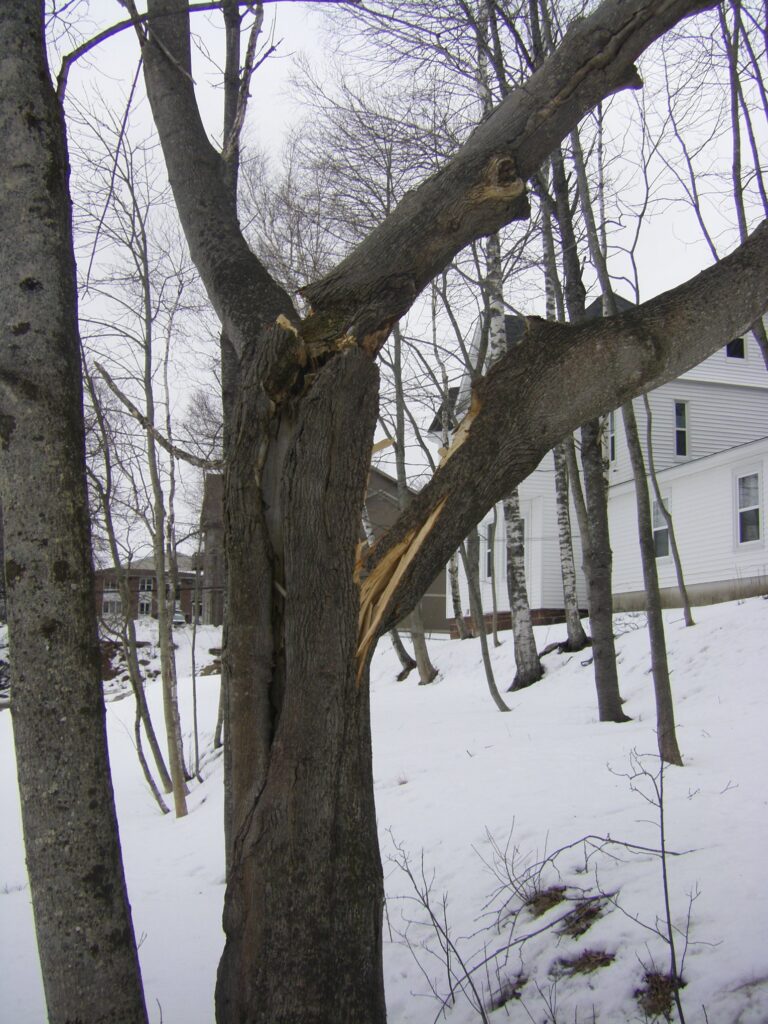
5. OVERWINTERED MULCH
It might seem like an impractical time to consider ordering mulch, but winter is actually a fabulous time to start building your stockpile. Our mulch is not aged, it is rarely ever a few days old, and aged mulch has many benefits for your trees and plants. A simple way to improve the quality of your mulch is by letting it sit for a long time, such as over the winter. By springtime, you will have a stash of aged mulch ready to spread over your plants. This will also put you ahead in terms of wait time, spring is a very popular time to order mulch and there is often a waiting period.
If you are interested in getting ahead on next year’s gardening, get in touch by email or phone and we will add you to our mulch list. We will be producing chips up until mid-December (weather permitting) and would be happy to bring them to you.
